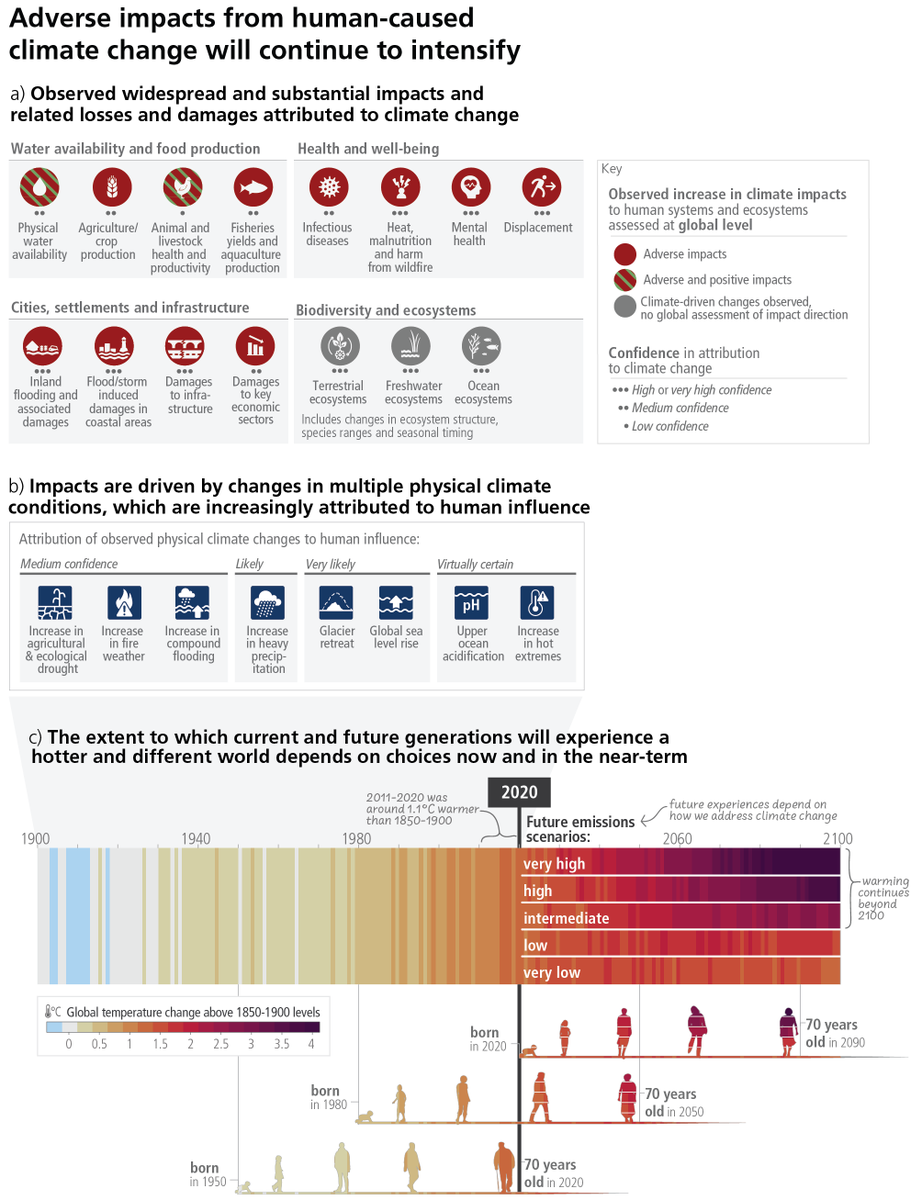A bit disturbing that #showyourbudgets contributes to ongoing confusion abt net-zero targets
Net zero CO2 ≠ net zero GHG ('climate neutral'), the latter reached 10-20 yrs later in scenarios due to harder-to-abate non-CO2, offset by CDR
National targets usually set in GHG not CO2
Net zero CO2 ≠ net zero GHG ('climate neutral'), the latter reached 10-20 yrs later in scenarios due to harder-to-abate non-CO2, offset by CDR
National targets usually set in GHG not CO2
https://twitter.com/rahmstorf/status/1307232031022161920
As you can see in global #IPCC pathways, most of the residual emissions at the time of net-zero (and later) are non-CO2, mainly methane and nitrous oxide from agriculture
swp-berlin.org/10.18449/2020R…
swp-berlin.org/10.18449/2020R…

The same applies to the European Union's emissions trajectory towards net zero.
Residual emissions are to a large extent non-CO2 from agriculture
swp-berlin.org/10.18449/2020R…
Residual emissions are to a large extent non-CO2 from agriculture
swp-berlin.org/10.18449/2020R…

In global 1.5C pathways, net zero CO2 is reached by 2050, net zero GHG by 2067 - so 17 years later!
The European Union's target of net zero emissions by 2050 is in GHG, not in CO2. I don't know of any EU country with an official CO2 reduction target
swp-berlin.org/10.18449/2020R…
The European Union's target of net zero emissions by 2050 is in GHG, not in CO2. I don't know of any EU country with an official CO2 reduction target
swp-berlin.org/10.18449/2020R…

This should be basic knowledge in the research community and among scientific advisors - but it obviously isn't
Even @sciforfuture Germany had to correct this point in their basic facts list (but it took some months to get them there...)
scientists4future.org/stellungnahme/…
Even @sciforfuture Germany had to correct this point in their basic facts list (but it took some months to get them there...)
scientists4future.org/stellungnahme/…

Others, like @Umweltrat continue to add to the confusion
https://twitter.com/Oliver_Geden/status/1260871070523035648
Here's already a good example how activists draw wrong conclusions from @showyourbudgets:
@KlimaVorAcht talks about 'linear GHG reduction paths', whereas #showyourbudgets figure only shows 'CO2 reduction paths'
@KlimaVorAcht talks about 'linear GHG reduction paths', whereas #showyourbudgets figure only shows 'CO2 reduction paths'
https://twitter.com/KlimaVorAcht/status/1307250601823174657
I'd suggest that @showyourbudgets changes 'climate neutral' into 'carbon neutral' and makes clear how net-zero CO2 relates to standard GHG reduction targets.
In the meantime, just add 10-20 yrs to the numbers reported here, and maybe have a look at this
royalsocietypublishing.org/doi/full/10.10…
In the meantime, just add 10-20 yrs to the numbers reported here, and maybe have a look at this
royalsocietypublishing.org/doi/full/10.10…

• • •
Missing some Tweet in this thread? You can try to
force a refresh
















